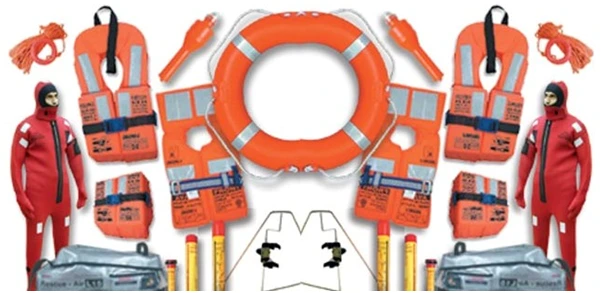Introduction to Life-Saving Appliances
Knowing about these crucial tools can make all the difference between smooth sailing and being lost at sea, whether on a boat, ship, or any water vessel. Let’s dive deep into understanding what these life-saving appliances are all about and why they are indispensable for every maritime explorer.
Types of Life-Saving Appliances

When it comes to life-saving appliances, a wide range of equipment is designed to ensure individuals’ safety in emergencies. Some common types include life jackets, life rafts, EPIRBs (Emergency Position Indicating Radio Beacons), and personal locator beacons. Life jackets are essential for buoyancy and keeping individuals afloat in water. They come in various styles, such as inflatable or foam-filled, and are suitable for activities like boating or fishing. Life rafts are crucial for evacuating vessels during emergencies and providing shelter until rescue arrives. They can accommodate multiple people and often come equipped with survival essentials like food rations and first aid supplies. EPIRBs and personal locator beacons are electronic devices that transmit distress signals to search and rescue authorities, pinpointing the location of individuals needing assistance. These devices are vital in expediting rescue operations, especially in remote areas or at sea.
Importance of Life-Saving Appliances
Regarding maritime safety, having proper life-saving appliances on board can make the difference between life and death. These essential tools are designed to assist in emergencies such as man overboard, fire, or sinking. Having the right equipment readily available can help save precious time and ensure a swift response when disaster strikes. Life-saving appliances protect the lives of those on board and contribute to overall peace of mind for crew members and passengers alike. Knowing that effective measures are in place for emergencies can alleviate anxiety and create a sense of security at sea. These appliances are required by law on all boats and ships to comply with safety regulations. Failure to have proper life-saving equipment onboard can result in fines or legal action. By prioritizing the importance of these devices, you ensure compliance and demonstrate a commitment to the well-being of everyone on board.
Examples of Life-Saving Appliances
Life-saving appliances come in various forms and serve different purposes to ensure safety on boats and ships. One common example is life jackets, designed to keep individuals afloat in case of emergencies. These wearable devices are essential for buoyancy and can significantly impact rescue operations. Life raft provides a secure platform for multiple people to gather while awaiting assistance. Life rafts are equipped with necessary supplies like food, water, and signaling devices to increase chances of survival until help arrives. Emergency position-indicating radio beacons (EPIRBs) are also vital tools that transmit distress signals when activated, enabling search and rescue teams to locate vessels in need quickly. Additionally, fire extinguishers play a critical role in combating onboard fires that could jeopardize the safety of passengers and crew members.
Proper Maintenance and Usage of Life-Saving Appliances
Maintaining and using life-saving appliances are crucial for ensuring their effectiveness in emergencies. Regularly inspecting and testing these devices can significantly differentiate between life and death. It’s essential to follow manufacturer guidelines for maintenance, which may include regular checks, servicing, and replacement of damaged parts. Familiarizing yourself with how each appliance works can help you respond quickly during an emergency. Ensure that everyone on board knows the location of all life-saving appliances and how to use them correctly. Conduct drills periodically to practice using the equipment under different scenarios.
Legal Requirements for Life-Saving Appliances on Boats and Ships
Having the right life-saving appliances on boats and ships is not just a matter of choice but a legal requirement. It is crucial to adhere to maritime laws and regulations regarding the installation, maintenance, and usage of life-saving equipment. Failure to comply with these legal requirements can result in fines and penalties or even jeopardize the safety of everyone onboard. Ensuring that all necessary life-saving appliances are present, properly maintained, and used correctly can significantly increase the chances of survival in case of emergencies at sea.




